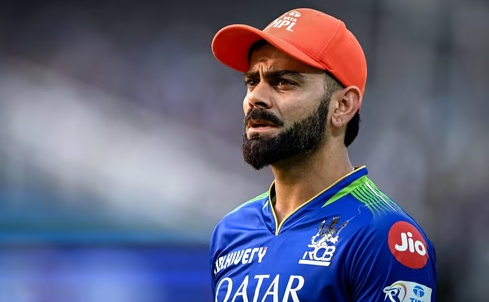CNN Central News & Network-ITDC India Press/Press. ITDC News Bhopal: Virat Kohli is the holder of the Orange Cap in IPL 2024, as he has been since the first week of a competition that is exactly one month old. The former India skipper has amassed 379 runs at an average of 63.16 and a strike-rate of 150.39, perfectly acceptable numbers that indicate both supreme consistency and a healthy rate of scoring. Yet, Royal Challengers Bengaluru are firmly rooted to the bottom of the table, slumping to their sixth straight loss on Sunday and having won just one of eight matches this season.
There are two ways of looking at this crazy scenario – either that Kohli has primarily been ploughing a lone furrow, let down by the batting group around him, or that he hasn’t managed to make the same kind of impact like those below him in the batting chart.
RCB have two other batters with more than 200 runs – Faf du Plessis, the captain, is perched 239 (average 29.87, strike-rate 152.22) and Dinesh Karthik, with 251 (62.75, 196.09). Of the 12 ahead of him in the top run-getters, only three boast a better strike-rate than Karthik; tellingly, all three belong to the franchise that has set the tournament alight, with three of the four highest totals this season, all in excess of 250.
At just past the halfway stage of league action, Travis Head (324 runs) has the highest strike-rate of those with at least 200 runs, a staggering 216. His opening partner at Sunrisers Hyderabad, the less celebrated Abhishek Sharma (257), is scoring only marginally – very, very marginally – slower at 215.96 and Heinrich Klaasen (268), the South African destroyer, has blasted 198.51 runs for every 100 deliveries faced. Is it any surprise then that SRH are third on the table, with five wins from seven games? Actually, it is. One would have thought with this kind of firepower in the top four, they would occupy a higher slot, but that’s another matter altogether.
Coming back to the Orange Cap. When it was introduced in 2008 – the Purple Cap is its bowling equivalent, bestowed on the leading wicket-taker – it didn’t raise too many eyebrows. Twenty20 cricket was in its nascent stages, the IPL was India’s first sustained tryst with the newest format to sweep the cricketing stratosphere. Teams and individuals were finding their feet, and therefore most runs in an edition that brought with it the Orange Cap didn’t seem the worst bargain.
Over the last 17 years, though, the face of the 20-over game has changed beyond recognition. Today, it is less about volume and more about impact. Yes, runs still hold a lot of meaning, but they aren’t the be-all and the end-all. Take the Mumbai Indians vs Delhi Capitals game at the Wankhede earlier this month, for instance. Rohit Sharma (49), Ishan Kishan (42) and Tim David (45) all scored more runs, and at excellent strike-rates, but the game-changer was Romario Shepherd, who destroyed Anrich Nortje in a final over that yielded 32. Shepherd finished on 39 not out, off 10 balls. How can that be any less than the three batters who got into the 40s?
Of the top ten run-makers this season, only three batters have scored slower than Kohli – fourth-placed Shubman Gill (146.79), the Gujarat Titans leader, his compatriot Sai Sudharsan (122.27) and Lucknow Super Giants captain KL Rahul (143). LSG are currently fifth, GT sixth. Both teams have been reasonably well served by the batters that have followed these openers, RCB by and large haven’t. Kohli will gladly trade the Orange Cap for greater, more incisive and decisive support from the batters below him, because more than anyone else, he knows that scoring the most runs means nothing, given that the franchise he led for a decade is languishing at the bottom of the pack and is still searching for its first title in its 17th year of existence.

